A collection of food photography tips and tricks, as well as equipment and book recommendations to help you up your food photography game!
Set yourself apart from the food blog competition with these easy and practical food photography tips, helpful equipment lists, inspirational books, and more!
Being in the food blogging “biz” for over 3 years, there’s one subject I get asked about a lot… food photography! Honestly, I can attribute a lot of the growth of my blog to my growth in photography.
The food blogging world is a very saturated market, with hundreds of new blogs started every minute… so okay-ish photos just aren’t going to cut it.
You need something that will lure your readers in, make them instantly hungry, and set yourself apart from the competition! I’m by NO means an expert… and I feel like each time I shoot, I learn something new.
But as an example, the following is the very first photo I ever shared on the blog…
Wow. The focus isn’t sharp, depth of field is all wrong, and I took the picture under the incandescent kitchen lights…. oh dear! It’s a shame, since this Meatball Parmesan Bake is a delicious recipe! I’ve since re-shot this recipe, you can check it out here.
Flash forward 3+ years, and this is the most recent photo I’ve taken:
A lot more visually enticing right? This Drunken Slow Cooker Beef Stew is every bit as delicious as it looks!
If you’d like to transform your food photography, I’m here to share several tips to make your food look positively mouthwatering, as well as a list of my personal equipment that I use for just about every photo I take, and some of my favorite food photography books and tutorials!
BASIC FOOD PHOTOGRAPHY TIPS:
-
- Don’t be discouraged! Taking photos of food is a lot more challenging than you’d think. When we look at a plate of food with our eyes, we can see the whole picture, in 3D, as well as using our other senses to get an idea of that food in our minds. When looking at a photograph of food… well, a lot of times it just looks flat. The colors don’t pop, the details of the food that make it awesome don’t always show through, and it’s difficult to make it look as appetizing as it truly is! Even if you have a good “eye” for photography, just know that there is a learning curve with food photography and don’t give up 🙂
- Back away from the built-in flash! Even in dark situations… don’t use that pop-up flash on your camera. It will make your food look super unappetizing!
- Use Natural Light! Food shot in natural light will really make your mouth water! Most of my photos are taken with natural light, usually lit from the side or back/side. This works for me since I’m home during the day, and I’ve done tests to find the best location in my home and the best time of day to shoot. However, if natural light isn’t possible, see Tip #4.
- Use Artificial Light Made to Mimic Natural Light! There was a time that a lot of my recipes were shot with my artificial lights, but you wouldn’t be able to tell, since they are made to mimic the natural light 🙂 I find artificial light to be liberating to use, as you’re not at the mercy of the weather. Rainy, cloudy day? No big deal, you can still get a great shot! It can be tricky to set up, so expect a learning curve. These are a great option!
- Use a Tripod! This one can be a bit “controversial”, as some photographers prefer to shoot handheld and have the freedom to move around. Honestly, I used to miss that freedom. But once I started using a tripod, my shots became SO much sharper and clearer. Not to mention I didn’t need to take as many photos, since I knew the shots I was getting, were quality shots! I now find using a tripod to be liberating, since I can get through a photoshoot in under 20 minutes since I don’t need to take 15 shots to make sure one is usable.
- Don’t Be Limited in Your Photography Space! While it’s natural to shoot in your kitchen (it is FOOD photography after all), experiment in your house and see where you get some great light. I typically shoot in either my kitchen or my living room. I push a coffee table over to a big window and set up my shooting space!
- Diffuse Diffuse Diffuse! I almost ALWAYS diffuse my lighting, even on a cloudy day. No need for a fancy diffuser, I actually use a white bed sheet that I hang over the window where I’m shooting. For my artificial lighting shots, I drape a white t shirt or two over the light to soften it. Harsh lights are a bad thing!
- Use Smaller Plain Dishes to Shoot on! Typically a smaller portion of food looks more appetizing than a giant plate. Plus, it creates a story, like you’re inviting the viewer to join you for a plate 🙂 I picked up some plain white dishes a local grocery store for just a few dollars. They’re more of an appetizer plate size, perfect for food photography! It’s tempting to go for pretty patterns and fun designs, but they are difficult to use and not overpower the food. Using patterns takes a lot of skill, so to make things simple… try to use plain white, grey, or black dishes. Matte finishes are best if you can find them!
- Shoot RAW if Possible! If you have a DSLR camera, odds are, you have the ability to shoot in RAW format. The reason this is preferable is that you have MUCH more control over the editing of your photos in RAW. It will take your good photography and make it great! The quality of the image stays intact as you edit, so there’s no degrading of the image if you need to edit it quite a bit. The downside of this is that you’ll need software that has the ability to handle RAW files… such as Adobe Lightroom or Adobe Photoshop. I believe there are various free software programs available online as well, such as GIMP. Below these tips there’s an example of why I shoot RAW.
- Focus on the BEST Part of the Food! My favorite of the food photography tips! What I mean by this is, think of what your favorite part of the dish is, and focus and plan your shot around that. Is it the crunchy texture? Is it the glossy sauce? Maybe it’s how cheesy the dish is. Think of how you would describe the food to someone, and focus on that. Whatever it is, make that the star of your shot, and you’ll have a great shot every time!
- Know Your Angle! Generally, for food photography, overhead shots and a 45 degree angle are the standard formats. But certain foods look better with certain angles. A burger, for example, is best to shoot straight on, to showcase the layers and emphasize how big it is. If you shoot a burger overhead or at a 45 degree angle, all you’ll really see is the bun. Here’s a comparison:
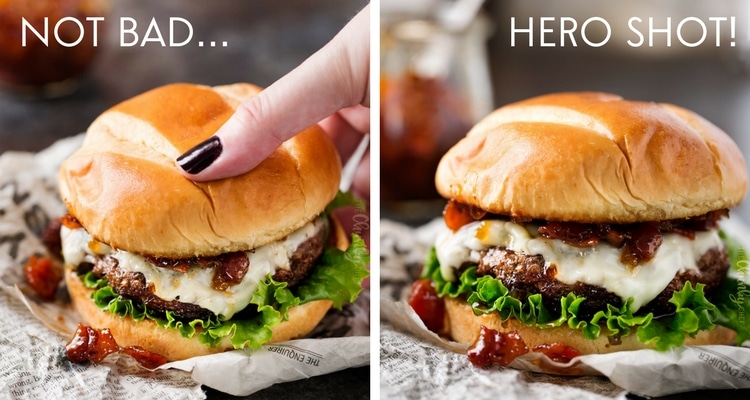
EXAMPLE OF RAW PHOTOGRAPHY:
I was shooting these nachos on a partly cloudy/partly sunny day and right as I pushed the shutter button, the sun came zooming out from behind a cloud and my image was SO overexposed, it was nearly completely white! Because I shoot in RAW, I was able to edit the image without degrading the quality and ended up with an image that you’d never guess was so horribly overexposed:
PHOTOGRAPHY EQUIPMENT:
You don’t necessarily NEED to have a fancy camera to take great photos… after all, it’s the photographer that creates a great shot, NOT the camera 😉 However, quality equipment in the right hands can equal some truly amazing images.
With DSLR cameras, there are two main types. Crop sensor and full frame.
HOW DO I KNOW WHICH TYPE OF DSLR CAMERA IS RIGHT FOR ME?
I would say that all depends on your skill level and how comfortable you are with food photography (or photography in general). If you’re just starting out, keep your camera on Auto mode, and are NOT shooting in RAW format, I would highly suggest starting with a crop sensor. For most food photographers, crop sensor cameras are more than enough.
However, if you’re shooting in Manual mode, have a great sense of light and composition, shooting in RAW, etc… then if your budget is open to it, you might be ready for a full frame camera body.
ADVANTAGES AND DISADVANTAGES OF CROP SENSOR/FULL FRAME CAMERAS:
CROP SENSOR
Advantages:
- Less expensive
- Less heavy
- Great for beginners
Disadvantages:
- Not that great in low light
- When buying lenses, you have to deal with the crop factor (explained below)
- Can be limited in terms of quality
FULL FRAME
Advantages:
- Amazing in low light (you can get up to a really high ISO before you see noticeable grain)
- Quality is superb
- No crop factor to deal with
Disadvantages:
- Heavy
- More expensive
- Can be overwhelming for beginners
I started The Chunky Chef using a Canon Rebel SL1, which is an extremely entry level crop sensor DSLR camera. I used it for about a year or more, and love how easy it was to use! After that I upgraded to a Canon 7D Mark II which is a top of the line crop sensor camera. If you don’t want to make the leap to full-frame, I HIGHLY recommend the 7D Mark II.
The Canon vs. Nikon debate is pretty null and void in food photography. I think it all comes down to a personal preference, as there are barely any differences in quality between the two brands. This post is centered around Canon products, as that’s what I use and am familiar with. My advice would be to go to a local camera store and hold cameras from both brands. See which feels good to you!
With a DSLR camera, you’ll need to have a lens as well. These can range from $100 – $5000 or more. If you have a full frame camera, if you like the look of a 50mm focal length… get a 50mm lens. Easy peasy. But for a crop sensor camera, there’s more to it.
Basically the sensor on a crop sensor camera isn’t a 35mm full frame, it’s cropped down. Entry level DSLR’s and non-professional cameras all have crop sensors. Canon has a crop factor of 1.6x, which means there’s a little math involved. Let’s say you love the look of the 100mm focal length (this is hugely popular in food photography). So…
100mm / 1.6 = 62.5mm
Well, there’s no 62.5mm lens, but Canon makes a 60mm macro, which works out to be 96mm with the crop factor (60mm x 1.6), which looks verrrrrry similar to the 100mm. So you can see that crop sensor cameras can be a little tricky when it comes to lenses.
This is a common complaint in the food photography world:
I have a Canon Rebel and a 100mm lens, but I have to stand like 8 feet away to get everything in the shot!
Well, it’s because with the crop factor, your operating with a functional 160mm focal length! The larger the focal length, the more up close the view will be (which means you’ll have to be farther back to get everything in view).
Here’s a little preview of what the same photo looks like from different focal lengths, as well as an in depth post by Christina Peters of the Food Photography Blog:
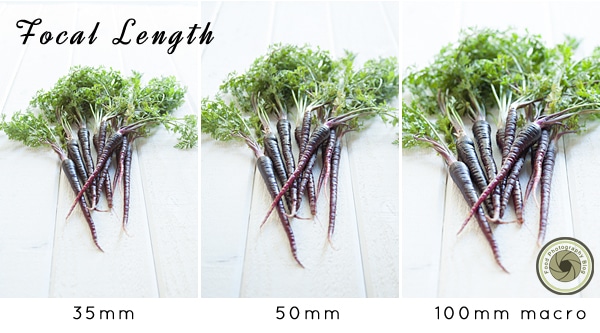
Incidentally, the site where that photo comparison came from is a FANTASTIC food photography resource, I highly encourage you to check it out!!
MY CURRENT PHOTOGRAPHY EQUIPMENT
Camera: Canon 5D Mark III
Lens #1 (my go-to): Canon 100mm macro L
Lens #2 (great for overheads): Canon 24-70mm L
Lens #3 (love it, but usually use the #2 lens above instead): Sigma 50mm
Tripod (with overhead arm): Vanguard Alta Pro with this ball head
Remote shutter: SMDV
SD Card: SanDisk 128gb
Editing with: Adobe Photoshop
MY PICKS FOR ENTRY TO MID-LEVEL FOOD PHOTOGRAPHY/BLOGGING:
Camera: Canon Rebel (any), or Canon 7D Mark II if your budget is flexible
Lens #1: Canon 60mm macro
Lens #2: Canon 35mm OR Canon 40mm STM (more budget friendly)
Tripod: Vanguard Alta Tripod Kit (comes with the ball head and has the overhead arm) OR if you don’t want the overhead arm… this kit is a bit cheaper
Remote Shutter: probably not necessary, but if you want to try shooting with one, the one linked above is economical
SD Card: SanDisk 64gb
Editing with: Adobe Photoshop/Adobe Lightroom/GIMP
FOOD PHOTOGRAPHY BOOKS/RESOURCES:
I’m a total book nerd, and I immerse myself in learning as much as possible… the following are some ahhhhh-mazing food photography books that will teach you SO much!! I highly recommend them! Each image is clickable and will take you to the respective websites (in a new tab).
This book was given to me by my husband and I poured through it in just about one sitting! The amount of practical tips is amazing and her section on photoshop tutorials was SUPER helpful!
If you love the dramatic look of the “dark food photography” movement, which, let’s face it, is pretty perfect for the Fall and winter comfort foods… Nicole’s book is perfect for you!! Until reading her book, I would look at the moody, dramatic photos and just wish I had ANY clue how to make my photos look like that. Now, they’re one of my favorite styles of photos to take! Nicole goes over everything in this book, from how to create a story with your photos, how to set up your shot, how to use light (both natural and artificial), and how to edit your photos. Check out The Spice Train to see her beautiful photography!!
Whew, this post has been a bit of a narrative lol. I hope you all have found it helpful! Food photography is a work in progress for us all and I can’t wait to see your photos!!
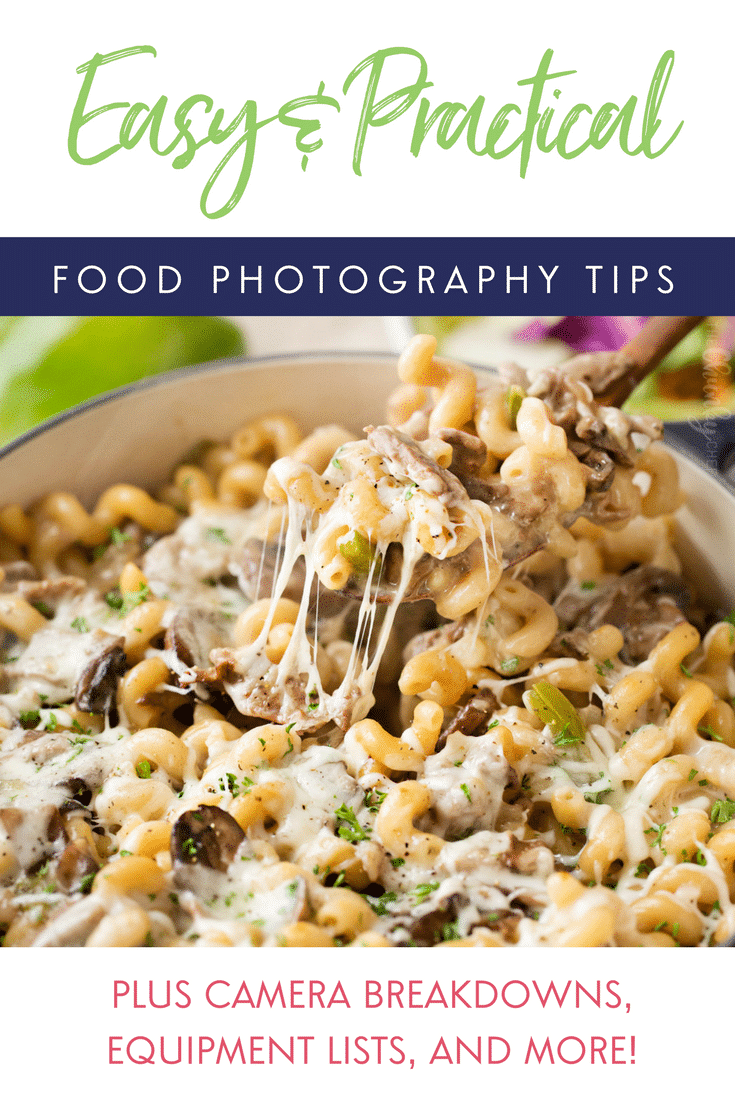
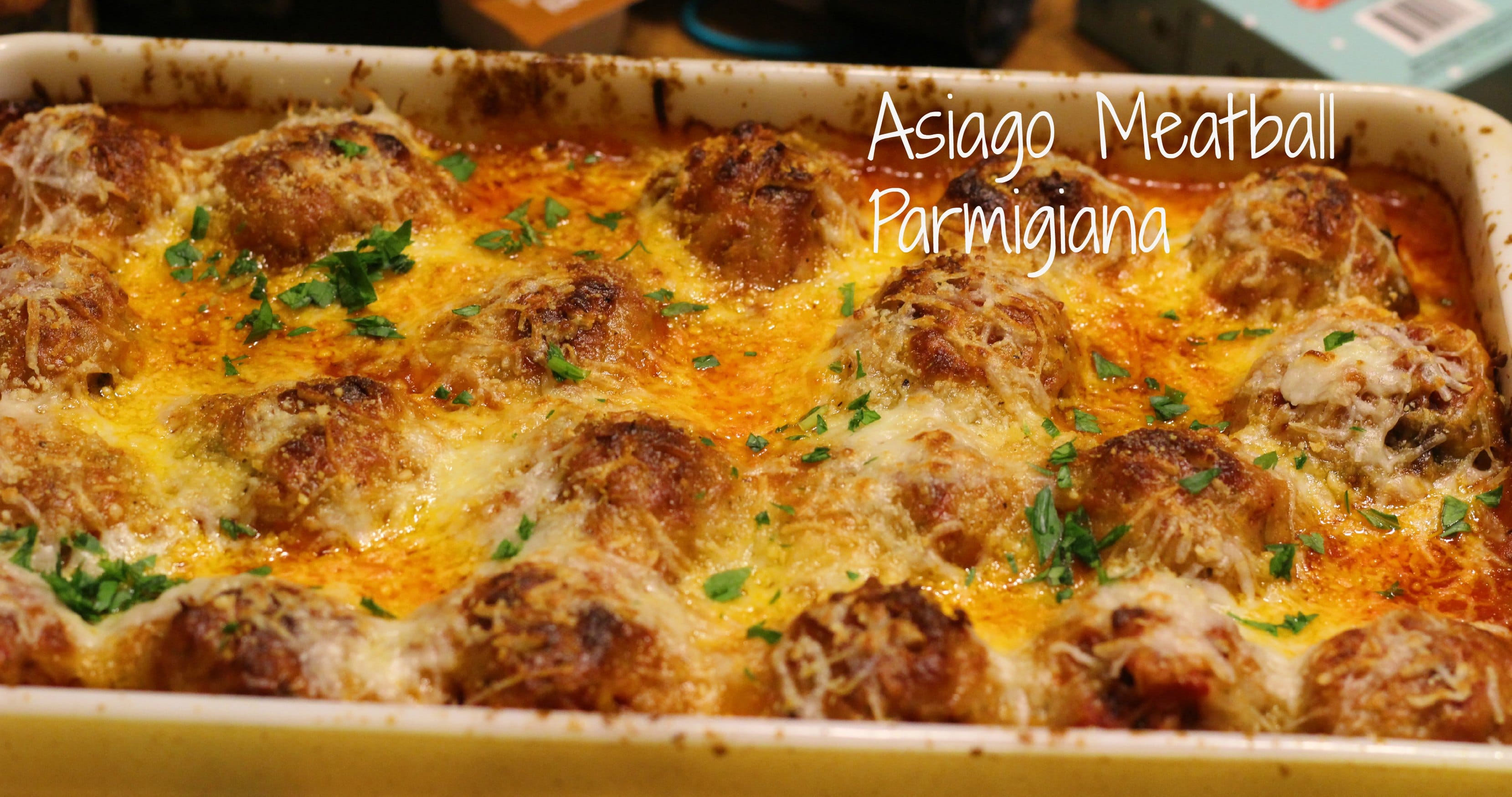
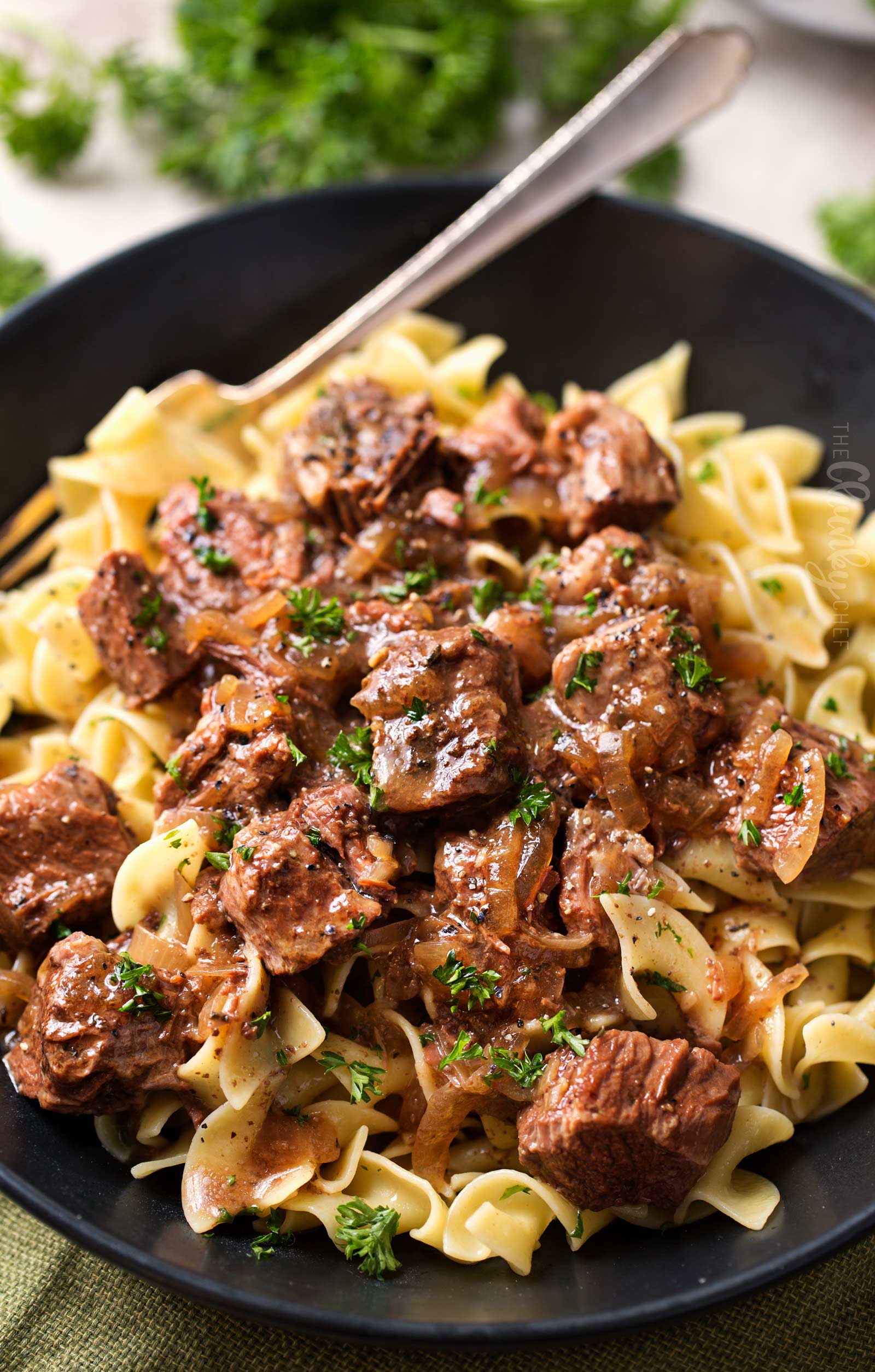
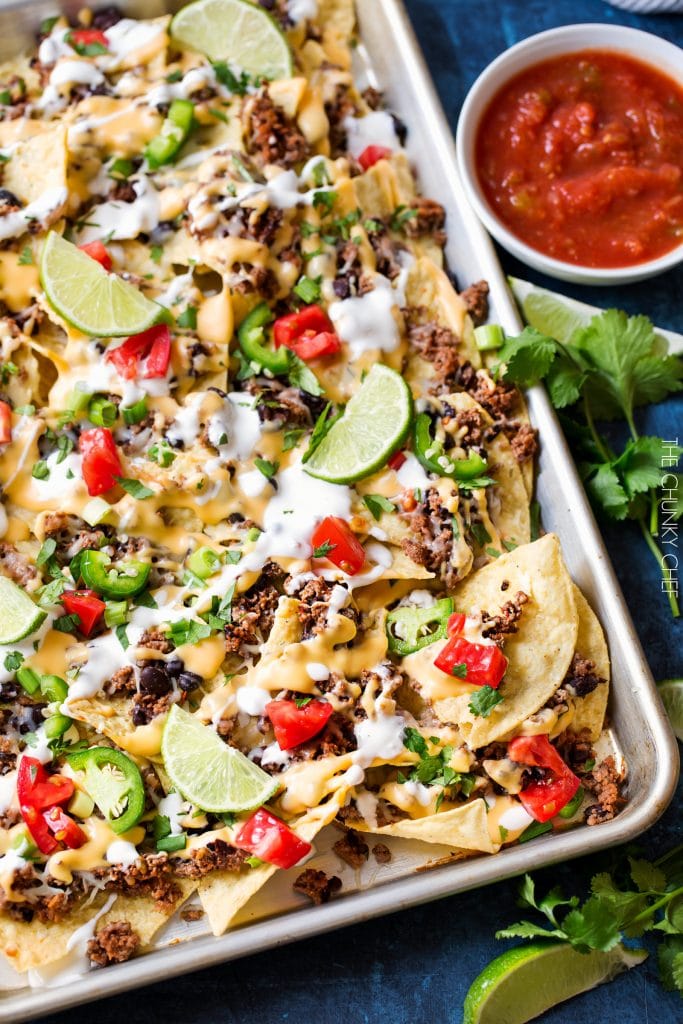
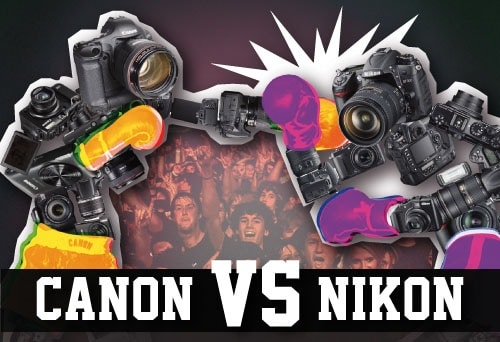
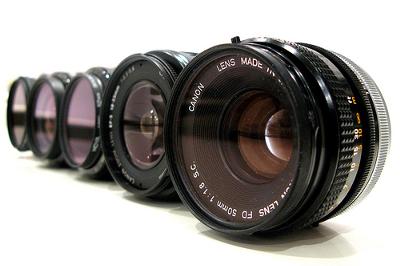
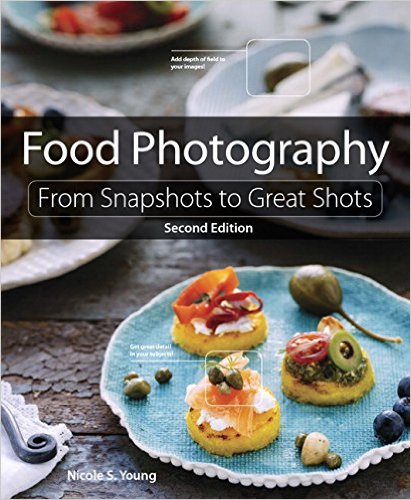


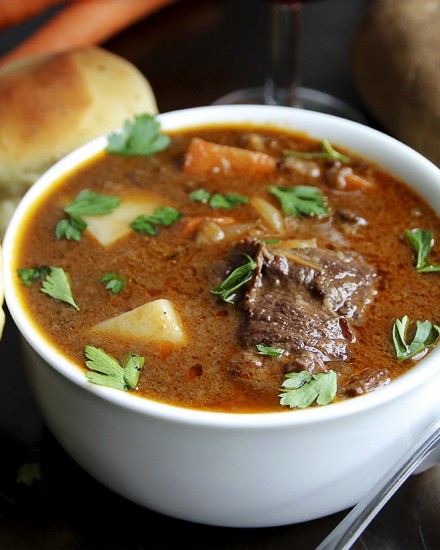
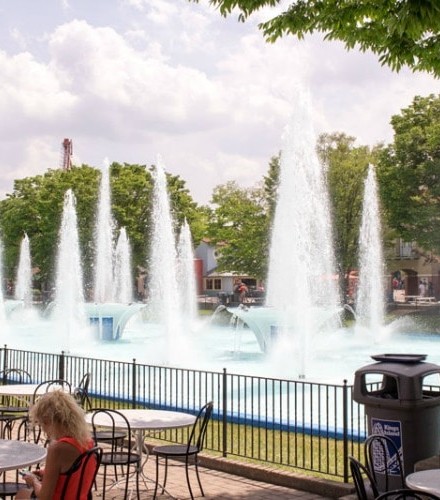
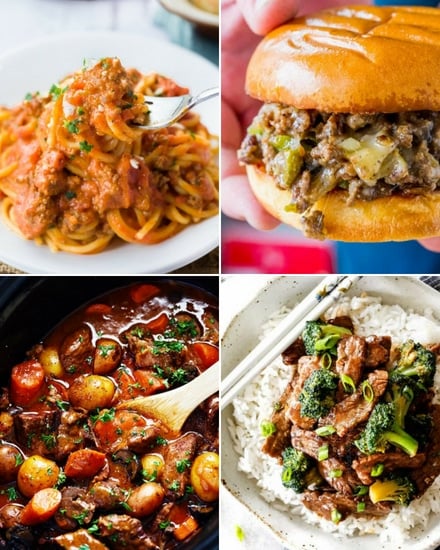
Meg @ With Salt and Wit says
Love all your tips! I am checking out all those books now 😉
The Chunky Chef says
Thank you so much Meg!! 😀
Julie is Hostess At Heart says
You’ve come so far in such a short time. We all have those early shots I need to redo them. I’m still learning, and really enjoyed your post.
The Chunky Chef says
Thank you so much Julie!! Ohhhh your photos are looking so beautiful by the way 😀
Sharon @ What The Fork Food Blog says
Wow, your pictures have come so far in a year! And now I’m really wanting a macro ?
The Chunky Chef says
Thank you so much Sharon!! Ohhhh yes, macro is verrrry addicting 😉
Naina says
Loved this post Amanda!! So many useful tips and resources in one place! Thank you!
The Chunky Chef says
Thank you Naina!! I’m so glad you found it helpful 🙂
Marisa Franca @ All Our Way says
Great tips!! I am constantly studying not only on photo equipment but also photo editing. Thank you for the resources.
The Chunky Chef says
Thank you Marisa!! 😀
Jessica @ Sweetest Menu says
Thanks for your great tips Amanda, its obvious that you REALLY know what you are talking about – your photos are absolutely stunning. I’d love to learn more about your artificial lighting set up. It’d be great not to be at the mercy of the weather!
The Chunky Chef says
Thank you SO much Jessica!! Feel free to email me (thechunkychef@gmail.com) with any questions you have about artificial lighting 🙂
Joanie @ Zagleft says
Great tips, Amanda. Now that I’m learning more about my camera, taking photographs is one of my favorite parts of blogging. And yes to the tripod! It’s amazing how much sharper and clearer the pictures are ( it took me a while to learn this one 🙂 )
The Chunky Chef says
Thank you Joanie!! Oh man, it took me about 9 months to finally give in to using a tripod, and now I don’t know what I’d do without mine lol 🙂
LAURA says
Thanks so much for your article. I look forward to trying your tips. I am 6 months in and really loving it, so like you ready to learn more, invest more time etc. to make it terrific.
The Chunky Chef says
Thank you Laura!! 🙂
Samantha says
Your photography is beautiful! I’m still pretty new at this. I shudder when I look at the photos on my first recipe, but I’m slowly getting better. One of these days I’ll redo them all (with some of these tips)!
The Chunky Chef says
Thank you so much Samantha!! I keep saying I’ll re-do all of my older photos, but I think I may keep them as a reminder of where I started 🙂 I just checked out your blog, you’re off to a really good start 🙂
Katerina @ Diethood says
What a great resource for food bloggers! Thanks for sharing your awesomeness!! 😀
The Chunky Chef says
Thank you so much Katerina!! Your photography always looks so amazing 🙂
Michelle Gwynn Jones says
Great tips. I seldom take pics of my food, but sometimes something just looks so good. I have done the look for the best light – all around my house – only to get a great shot of food I now have to reheat.
The Chunky Chef says
Thank you Michelle!! When I was first hunting for good light, my kids thought I was crazy, wandering around the house with a plate of food lol
Elizabeth says
These tips are great for food photography, but also for other blogging niche photography as well. I take pictures of my crafts with my Samsung phone, which does the job, but eventually I’d like to get a DSLR. The game-changer for me was taking pictures in natural light, though I’ve never tried draping a T-shirt or white sheet over the window…I’ll have to give that one a try!
The Chunky Chef says
Thank you Elizabeth!! I have a Samsung phone as well 🙂 Some of my recipe step photos are taken with my phone, just because it’s handy. Isn’t natural light just amazing?
Jessica @ Together As Family says
So helpful. I have always taken pictures with my iphone and I’ve learned a few tips that have really helped a lot! I shoot my pics by the big patio door off the kitchen and sometimes it’s almost too bright. I really like your idea of putting a white shirt over the light to mute it a bit. Thanks so much for all the info. I am going to check out those books.
Congrats on your success over the past year! That’s so awesome what you have done.
The Chunky Chef says
Thank you SO much Jessica!! 🙂 Wow, you take your photos with an iPhone? Your pictures are stunning… great job 😀
Holley Grainger says
Fantastic tips! I always try to use natural light but with this time change, I’m not able to shoot many of the recipes I make for dinner (and want to post). I love your info about the artificial light and diffusing. Can’t wait to reread this post and dig in even more!
The Chunky Chef says
Thank you so much Holley!! I know what you mean… it gets dark so early here, and even during the day, half the time it’s dreary… such a bummer for photography!
Chrissa - Physical Kitchness says
How did you know I SO SO SO needed this post?! Thank you very much. This is insanely helpful. I’m bookmarking this!
The Chunky Chef says
Great minds think alike! 😀 I’m so glad you found it helpful!!
ali says
Great tips! ! I’ll definitely try these. I need to reshoot a lot of mine. Happy 1st birthday!
The Chunky Chef says
Thank you so much Ali!! 🙂
Julie @ Tastes of Lizzy T says
Using a tripod and shooting in RAW were huge game changers! One of my favorite pieces of advice is to develop your own style and don’t compare to others. Your photography is gorgeous!
The Chunky Chef says
Thank you SO much Julie!! That’s absolutely right… finding your own style is something that is crucial and evolves over time 🙂
Tonia from TheGunnySack says
Great tips! The food photography is my favorite part of blogging!
The Chunky Chef says
Thank you Tonia!! It’s mine too 🙂
Ginny McMeans says
Your photos are always beautiful. Thanks for these tips on helping to take pictures as great as yours.
The Chunky Chef says
Thank you so much Ginny!! 🙂
Renee - Kudos Kitchen says
Very good tips and tricks. I’ve learned a lot from this post and your recent photo is mouthwatering!
The Chunky Chef says
Thank you so much Renee!! I’m glad you found it helpful 🙂